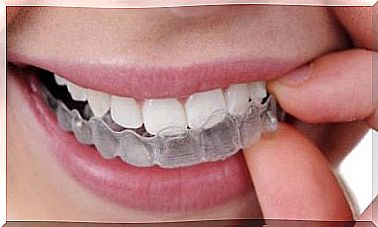How To Prevent Broken Neck Syndrome?
Broken neck syndrome is a collection of symptoms associated with the use of smartphones. The main sign is neck pain. We explain in this article how to prevent it.

What is called broken neck syndrome has other names in English. The most famous expression is “ text neck ”, which could be translated as “ the neck of text messages ” in clear reference to text messages sent via a cell phone.
Broken neck syndrome refers to all the symptoms, mainly painful, that result from the use of smartphones. This pain begins in the cervical region and usually extends to the shoulders and back. It can also be accompanied by headaches.
The most affected are young people, who tend to make more intensive use of mobile devices. Consider that there are nearly three billion cell phone users in the world. This generates a huge sensitive population.
Although the central problem in this case is pain, it takes time for a medical opinion to be issued on the problems generated by these devices. Screen light on the eyes, or joints damaged by repeated trauma, are a few examples.
Broken neck syndrome is not included in the international classification of diseases. However, this pathology exists as such. We would say it is neck pain and sometimes dizziness. In this particular case, the neck pain is caused by the position of the head, as we will see now.
The cause of broken neck syndrome
The underlying problem with broken neck syndrome is position. It is associated with cell phone use, but what ultimately causes the pain is the abnormal tilt of the head for a long time.
When the head is upright, in a normal or neutral position, the weight on the spine is about five kilograms. It is the equivalent of the weight of the structures of the skull.

However, when the head is tilted forward, the weight on the neck begins to increase. With an incline of forty-five degrees, the weight increases from five to over twenty kilos.
The problem is, the switch becomes a habit and deepens. The more you use your smartphone, the more angle you use to write and read on your device. This is done gradually without noticing it.
Compared to computers, the cell phone causes a greater tilt of the head. It has also been found that with the use of computers there is less lateralization of the head and less elevation of the shoulders.
It all relates, in a sense, to ergonomics. Ergonomists, that is, those who study posture and its effects on health, use a scale to assess risk. This is called the RULA scale, and for everyday, everyday cell phone use it gives a rating of 6, which is a very high risk.
What is the ideal posture for using a smartphone?
As with any activity that involves a specific posture, there are more correct and healthy ways to do it. In the case of the cell phone, there are three main concepts for correct posture:
- The head should be in a neutral zero degree position
- The arm holding the smartphone must always be at eye level so as not to lower your head
- The neck should have moments of relaxation and rest at intervals to vary the position
Since broken neck syndrome is linked to prolonged use of electronic devices, the recommendations also apply to computers. The head should be at zero degrees for computer use, with the monitor at eye level and resting at regular intervals.

What steps can be taken to prevent broken neck syndrome?
Drastic measures are not necessary when it comes to preventing broken neck syndrome. Here are the basic recommendations you can start implementing right now:
- Interrupt the use of your smartphone : you need to take breaks from the screens, especially the mobile phone, in order to relax your eyesight and the muscles of your neck
- Stretch : When you are not using the devices, take the opportunity to turn your head and stretch your neck muscles. You can also stretch your upper limbs to accompany the relaxation of your neck
- Raise arms and supports : screens should be at eye level, placing the head in a neutral position. It is helpful to do the exercise of checking the posture of the arm holding the cell phone. As well as condition the height of desks and tables
- Regulate the screen light : the phone’s brightness is able to over-stimulate the eye muscles, and this is related to cervical contractures
- Do not use your cell phone at bedtime : It is common for us to read and check our messages when we are in bed. This position is totally abnormal, our arms are forced, our eyes are over-stimulated and our neck is not well supported.
If you already have pain from Broken Neck Syndrome, see a healthcare professional. He or she will probably recommend physiotherapy sessions and some pain relievers to temporarily ease the pain. It’s not a condition to be afraid of, but we can prevent it much better.









